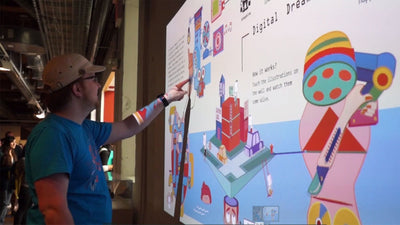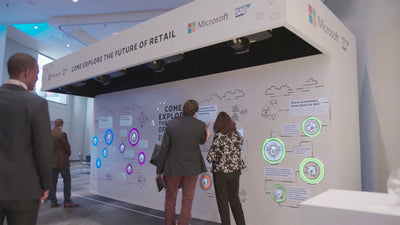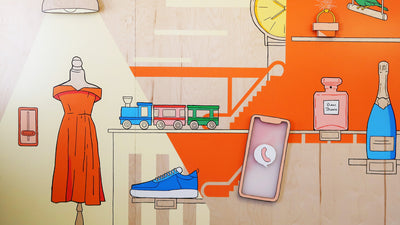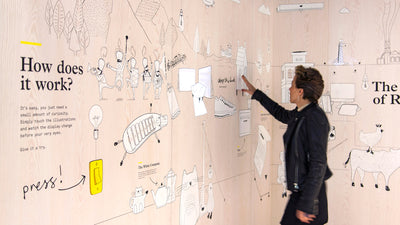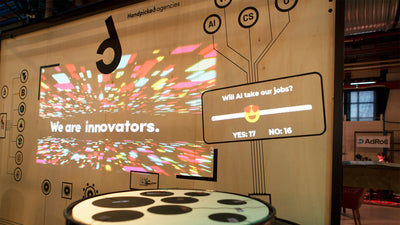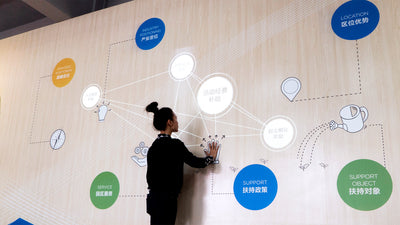Let's Create A Playable City - Designing An Immersive Environment For An Exhibition

How the Urban Conga uses our Interactive Wall Kit in their large-scale installations to create magical experiences
We caught up with Ryan Swanson from The Urban Conga, a multidisciplinary design firm promoting community activity and social interaction through open-ended play. They’ve achieved this by creating interactive installations, custom playable products, and immersive spaces that spark creativity, exploration, and free-choice learning into the built environment.
They’ve collaborated with public and private organizations, brands, governments, and universities all around the US as well as in Australia, Canada, Ireland, South Africa, Japan, Mexico, Nigeria, and the UK delivering workshops, lectures, urban interventions, playable products, custom installations, development plans, and public policy recommendations. Through their work, they continue to push the power of play for all within the development of their built environment.
Lets Create a Playable City Exhibition from THE URBAN CONGA on Vimeo.
The key is to find what it is you want to communicate and as Plato once said ”You can discover more about a person in an hour of play than a year of conversation”, and these are the exact moments The Urban Conga strives to create and advocate for all demographics to share through their work.
They’ve used Bare Conductive products in several projects before, so Ryan was one of the first people that explored the Interactive Wall’s capabilities. It was a lot cleaner and easier to use, something that allowed them to take less time figuring out the setup and more time designing the overall piece they were creating.
Ryan says that the first idea that came to mind with the new kit was to create an interactive environment. It had been something they wanted to do for a while and the new kit came out right when they were in the process of designing this playable exhibition.
We also talked about the exhibition and how they used the new kit to design it. They created the ”Let’s create a playable city” exhibition to promote the value and impact of implementing play within the development of an interactive environment of our cities and communities. It explores the idea for play to exist in everyday spaces, and encourages people to think about these spaces that could become PLAYces: like a crosswalk, park bench, street light, building facade, sidewalk, bus stop, or just the everyday space in-between.
Looking at how these often once boring or under-utilised situations can turn into stimulating creative outlets for social interaction and community activity through open-ended play. The exhibition uses both qualitative and quantitative data to walk a visitor through the impact play has on the health, identity, economic, and social value of a city. The exhibition was sparked by their soon to be released ”Guide for creating a Playable City” that people can download for free.

The Interactive Wall Kit allowed them to enable learning in a playable way and helped them to expand the mind of the user in how to use technology and play to create more playful and communal, smart cities.
The new kit allows them to create cleaner concepts and express the technology of the work in a different way. With their work, they like to use technology, but they want to make sure all of their work is inclusive and usable for everyone. The great thing about using this kit and the touch sensor technology is people don’t need tools like a phone or an app to engage with the work. The kit allows to use tech and make an interface that is accessible for everyone.
The new kit was designed with the ease of use in mind, as well as how fast people can create the project they have in mind through a seamless process. Ryan says that it took them about two months to fully design and build. Of course, this can take less depending on the project you’re working on. They wanted to design this exhibition as a kit of parts that allows us to take it down and show it in new cities around the world.
The Urban Conga takes the exhibition onto another level by adding projection mapping, using MadMapper. When the user walks up to the piece, they can interact with a certain section and it triggers that area of the city to come to life through different animated projections. The projections also reveal data and facts based on the value in which you are reading about in the exhibition. The projections along with the sounds bring a 2-dimensional exhibition to life and create a 3-dimensional experience.
Having the ability to just plug the auxiliary cords directly in without soldering was a huge thing for them. This made the process seamless and less finicky. It also allowed for easy construction on site, and also enabled them to easily disassemble and reassemble the installed piece in a new location.
What makes them choose Bare Conductive products? Ryan says that they enjoy using Bare Conductive technology because of the simplicity it creates on their end to adapt their work. In their mission to create a more interactive environment and playable cities, the technology created by Bare Conductive allows more people to explore new ways of doing this. It opens up so many doors to what playable interventions can begin to be implemented within their urban infrastructure.
Currently, they are working on projects in the US and Mexico, and they also have one of their installations titled ”Oscillation” which is on tour with CREOS. This installation uses adapted Touch Boards and proximity sensors to create a piece that acts similar to that of a theremin. People can dance and play around the interface changing the colours and sounds of the installation.
You can find them either in their offices at Tampa, Florida or their new office in Brooklyn, New York. They’re always looking for new clients to explore new ideas with on creating custom installations, products, and learning environment that use play and interaction.

We love it when you share your projects! Post your project on Instagram, YouTube, or Twitter, and make sure to tag @bareconductive or use #bareconductive. You can also send your videos and photos to info@bareconductive.com so we can post them on our site for the world to see.


